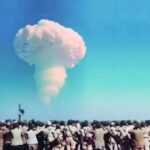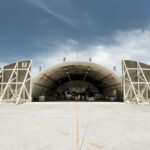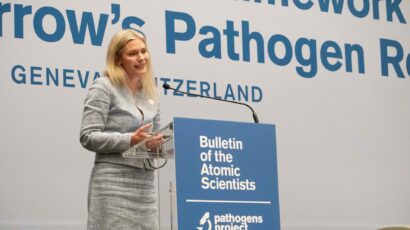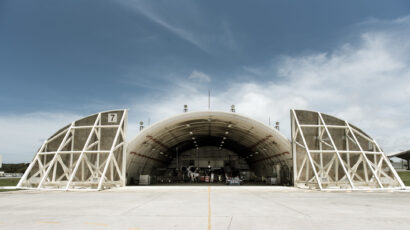Examining North Korea’s satellite launch vehicle
By David Wright | March 24, 2009
But we can examine North Korea’s past missile efforts and the path that other countries such as China have taken to develop satellite launchers and ballistic missiles to understand the range of possibilities for the upcoming launch.1
North Korea’s announcement that it will attempt to launch a satellite into orbit in early April begs the obvious questions of what launcher it will use and what capability that launcher could give if used as a ballistic missile. The easy answer is that no one in the West knows.
But we can examine North Korea’s past missile efforts and the path that other countries such as China have taken to develop satellite launchers and ballistic missiles to understand the range of possibilities for the upcoming launch.1
Some have said that North Korea is undertaking an intercontinental ballistic missile test disguised as a satellite launch. While a successful satellite launch would demonstrate the mastery of some missile technologies, it wouldn’t necessarily demonstrate the ability to launch a heavy payload over a long distance. For example, the Iranian Safir-2 launcher that placed a small satellite in orbit in February probably would have a range of about 4,000 kilometers with a 1-ton payload (about the weight of a first-generation nuclear warhead)–far shorter than intercontinental range.
The available information
The launcher North Korea plans to use, called the Unha-2, is commonly believed to be derived from the Taepodong-2 missile that Pyongyang began developing in the 1990s but has never successfully launched. In preparation for the launch, North Korea recently announced the location of public hazard zones for shipping and aviation. These zones are the regions where the first two stages of the launcher are expected to fall into the ocean.
The number and location of these zones indicate that the launcher will have three stages (if the launch is successful, the third stage will remain in orbit with the satellite) and that the launch direction will be due east. This direction is consistent with a satellite launch since the launcher gains speed from the Earth’s rotation. (In this case, it would gain about 5 percent of the speed it needs to place a satellite in orbit.) The launch direction will take the launcher over the Pacific Ocean and in the general direction of Hawaii, but not toward the continental United States. Unfortunately, it will also take the launcher over the northern tip of the main Japanese island of Honshu early in flight–a trajectory that has upset Japan.
The launcher’s origins and capabilities
Flight-tests of other North Korean missiles–in particular the 1,300-kilometer-range Nodong and the Taepodong-1 (TD-1) launcher used in an unsuccessful August 1998 satellite launch–have allowed us to infer something about the technology North Korea used to build its previous missiles. A starting point is to assume the Unha-2 launcher uses technology that is a straightforward evolution of past North Korean missiles. Those launchers relied on technology that is closely related to the Scud-B missile, which the Soviet Union developed in the 1960s.
The large first stage of the Unha-2 launcher is new, and North Korea hasn’t successfully flight-tested it. The only previous flight test was in July 2006 when the first stage failed approximately 40 seconds into the launch, causing the launcher to crash a few kilometers from the launch site. The first stage is believed to have a diameter of 2.25 meters and may use a cluster of four engines, each similar to the single large engine used in North Korea’s Nodong missile, which has a diameter of 1.25 meters. By clustering four engines, North Korea could use an existing engine to develop a stage with four times the thrust of the Nodong; Pyongyang also would be following a development path used by other countries in building larger rocket stages.
The second stage may use a single Nodong engine or an engine of similar capability, modified to be used at high altitude. Some experts believe this stage may use a modified engine from a Soviet SA-5 surface-to-air missile.2 Unlike the Scud engine, it’s possible to vary the thrust of this engine while it is operating, potentially allowing the boost phase of the missile to include a long, low-thrust phase characteristic of a satellite launch.
The third stage of the launcher probably has a mass of about 1 ton and may use solid fuel, as was reported for the third stage of the TD-1 during its August 1998 launch.
Based on these assumptions, the Unha-2 would have a launch mass of about 80 tons and may have the capability to place a payload of about 100 kilograms into orbit at 400-kilometers. If launched on a ballistic missile trajectory, a missile with these characteristics would be able to carry a 500-kilogram payload approximately 9,000 kilometers and a 1,000-kilogram payload approximately 6,000 kilometers. Since it likely would be difficult for North Korea to build a first-generation warhead and heat shield with a mass of 500 kilograms, this wouldn’t represent a true intercontinental nuclear capability.
Moreover, the structural strength and mass distribution of this missile may not be compatible with placing a much larger payload on it. Thus, significant modifications may be required to use it as a ballistic missile. Nonetheless, a successful launch would demonstrate important technical capabilities. A caveat, though: These estimates depend on the assumptions presented above, which may prove to be incorrect.
Possible advanced capabilities
The two primary steps for going beyond the technology exhibited in North Korea’s existing missiles are: (1) making the rocket body out of lighter-weight materials such as aluminum alloy (rather than steel) to reduce the structural mass of the launcher; and (2) increasing the thrust of the engines by using different propellants. For example, there are combinations of storable liquid propellants that have been used for decades that have significantly better performance than those used in the Scud missile.
China’s Long March-1 (LM-1) launch vehicle illustrates the improvements such steps could provide. The LM-1, which China first launched in 1970, is essentially the same size and configuration as the Unha-2. The first stage was originally designed as China’s one-stage Dong Feng-3 (DF-3) ballistic missile. The DF-3 had a range of 3,500 kilometers carrying a 1-ton payload. It uses a cluster of four engines. China built this launcher out of an aluminum alloy to give it a lightweight structure and used more energetic propellants (nitric acid and unsymmetrical dimethylhydrazine) than are used in Scud missiles.3
Therefore, the LM-1 provides a model that can be used to estimate the potential capabilities of a more advance version of the Unha-2 than considered above. This launcher is reported to be able to place a 300-kilogram payload into orbit at an altitude of a few hundred kilometers, compared to a 100-kilogram payload for the Unha-2 model. Launched as a ballistic missile, the LM-1 would be able to carry 1,000 kilograms to a range of 8,500 kilometers and 500 kilograms more than 12,000 kilometers.
China later upgraded the LM-1 by using even higher-performance fuels and replacing the third stage with a larger and more capable stage, while keeping the overall configuration of the launcher essentially the same. With these changes, the launcher could place approximately four times as much payload into low Earth orbit and as a ballistic missile, could launch a 1,000-kilogram payload over intercontinental range.
To achieve significantly greater capability, China developed a much larger launch vehicle, the Long March-2, which has a diameter of 3.35 meters and a launch mass of 200 tons–two and half times the mass of the LM-1.
It remains to be seen where North Korea’s launcher is on this path of increasing technology. While the technical steps discussed above have been incorporated into space-launch vehicles for several decades, they pose material and manufacturing challenges that North Korea might not be able to overcome at the moment.
There is strong evidence that Pyongyang’s missile development program depended heavily on technology and assistance from Russian missile experts, although possibly without the involvement of the Russian government.4 If North Korea’s indigenous missile capabilities still are limited, then efforts to work with other countries to restrict further foreign assistance would be important and could help slow future progress.
1For a more detailed analysis than what I offer here, see my March paper, “An Analysis of North Korea’s Unha-2 Launch Vehicle.”
2This option has been discussed by Theodore Postol (personal communication, March 2009) and R. H. Schmucker, “3rd World Missile Development: A New Assessment Based on UNSCOM Field Experience and Data Evaluation,” 12th Multinational Conference on Theater Missile Defense, June 1-4, 1999, Edinburgh, Scotland.
3Zuwei Huang and Ximin Ren, “Long March Launch Vehicle Family,” Space Technology, April 1988, pp. 371-375; Zuwei Huang, “Long March Vehicles in the 1990s,” in Space Commercialization: Launch Vehicles and Programs, edited by F. Shahrokhi, J. Greenberg, T. Al-Saud (Washington, D.C.: American Institute of Aeronautics and Astronautics, 1990), pp. 1-6; John W. Lewis and Di Hua, “China’s Ballistic Missile Programs,” International Security, Fall 1992, pp. 5-33.
4See, for example, Timothy McCarthy, “North Korean Ballistic Missile Programs: Soviet and Russian Legacies,” in WMD Threats 2001: Critical Choices for the Bush Administration, edited by Michael Barletta, Occasional Paper No. 6, Center for Nonproliferation Studies, Monterey Institute of International Studies; Schmucker, “3rd World Missile Development.”
Together, we make the world safer.
The Bulletin elevates expert voices above the noise. But as an independent nonprofit organization, our operations depend on the support of readers like you. Help us continue to deliver quality journalism that holds leaders accountable. Your support of our work at any level is important. In return, we promise our coverage will be understandable, influential, vigilant, solution-oriented, and fair-minded. Together we can make a difference.
Topics: Nuclear Weapons, Opinion















